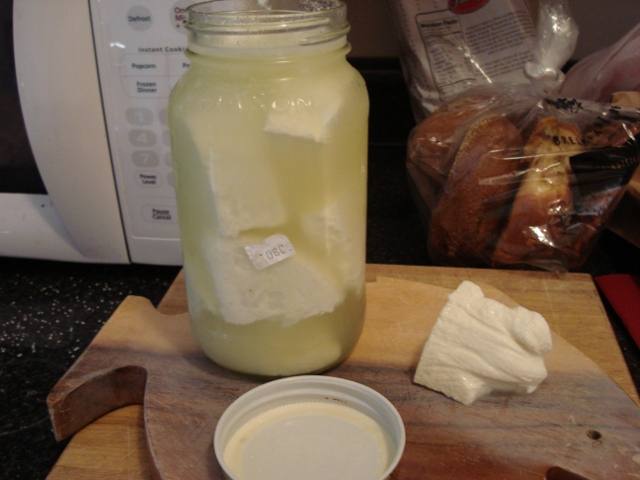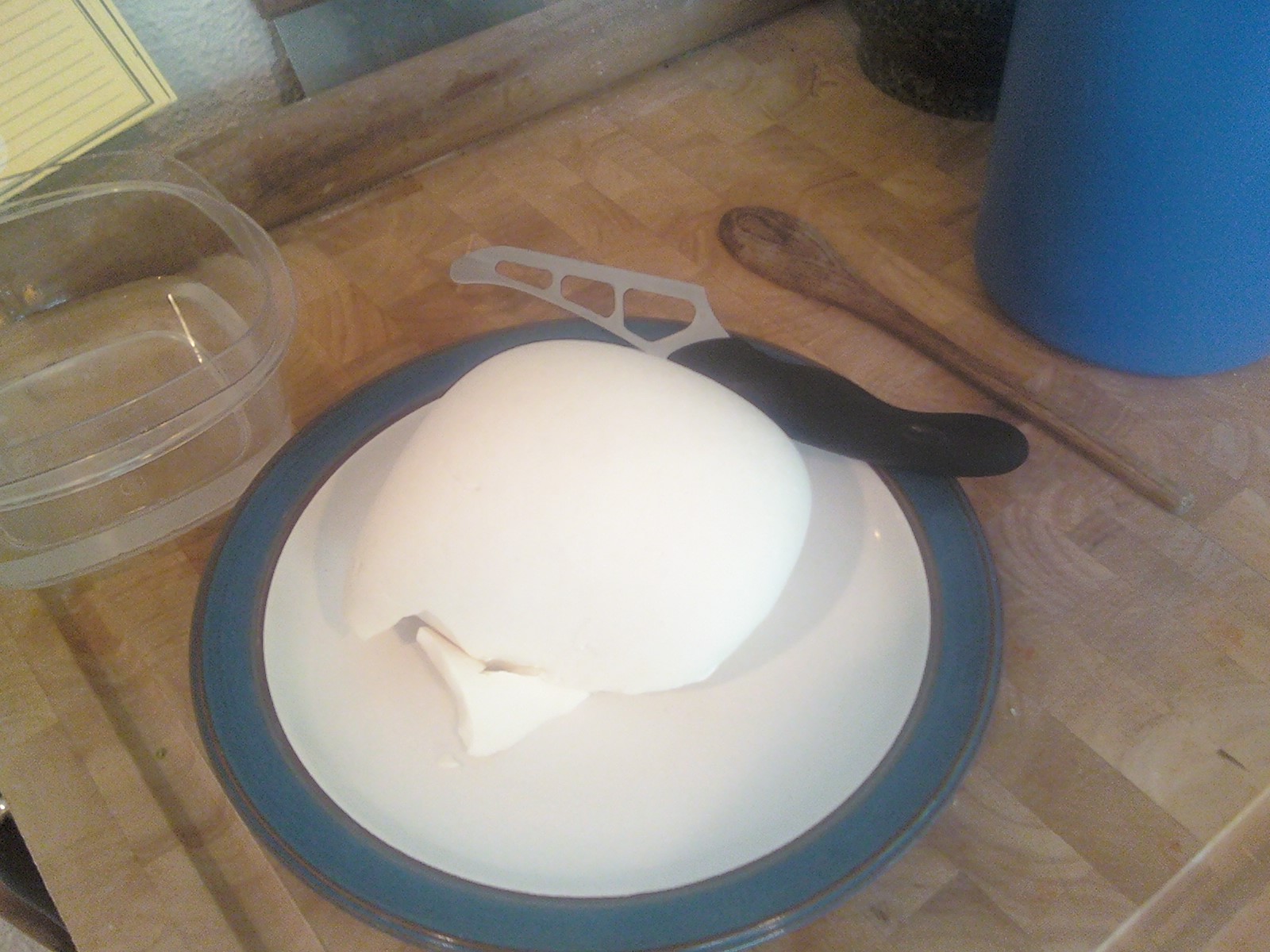|
Site.SideBar
|
- Equipment to sterilize by boiling:
- Curd Knife, Plastic Ladle, slotted curd spoon, 2 table spoons, 2 ceramic resting dishes
- 2 Cheese cloths and a kitchen towel
- Thermometer, strainer, stainless spag pot
- Cheese press - lids, cylinder, bungee chords, pie plate (for draining)
- Glass container for storing the curds
- 3 Glass jars for storing the brine and cheese
- Equipment to sterilize w/bleach:
- tuna cans
- counters, stove
- May 12, 2009 (early morning)
- Started making it using the professor's recipe
- I used a gallon of Stewart's milk (dated May 22)
- I used yogurt starter from the yogurt I had made 2 days before
- At 9 hours, there was nearly a clean break, but not quite
- At 12 hours it looked exactly the same, and I got impatient. I cut the curds, and they somewhat disintegrated, which was clearly a bad thing.
- I think I did the right thing by getting impatient, under the circumstances. The disintegrated curds make for slow draining. I ended up changing the cheesecloth repeatedly and leaving it overnight.
- To fix the problem with the curds not setting properly:
- I should add calcium chloride when using store-bought milk
- I could have used the correct amount of Dannon Yogurt so that the acidity would hopefully be correct
After failing that, I should have waited another 9-12 hours after failing to get a clean break.
- "If you have not achieved a clean break in 12 hours, you probably never will."
- "If you did all these, then you should expect to achieve a clean break within 2-3 hours at the longest."
- Anyway, I ended up draining the curds overnight (5 hours longer than the recipe called for, I think it took longer because disintegrated curds clog up the cheese cloth, so it takes much longer to strain). After straining overnight, the feta seemed to recover really nicely. It was exactly like I would expect - a fresh, slightly wet pile of feta-like curds that should hopefully dry up after pressing and aging.
- Here is another recipe, that sounds like a better recipe for feta (hang it for days instead of short hanging and longer pressing - this was basically what I ended up doing anyway):
- Pressing:
- I started pressing the cheese on Wed morning (the 13th), and pulled it out around 7:00pm. There were several imperfections in the process:
- I had left one lid of a tomato can intact for the press because it was a difficult balancing act with both lids detached. When the time came to remove the cheese, I couldn't without can-opening the second lid.
- The cheesecloth was not nicely containing the cheese at all. It didn't cause too much of a problem because I was cutting the cheese into pieces anyway, but if I had wanted a nice molded shape, it would have been basically ruined. I think that the main problem was caused by transferring the cheese from one can to another. The cheese cloth did not stay put.
- The cheese towards the bottom of the press was fairly wet, so I likely would do well to have better drainage.
- I had used a tuna can under the press to raise the press so that it had some room to mash downward. By evening, the cheese had compressed enough so that the tuna can was completely in the press, and the press bottomed out, which likely prevented further pressing which would have been beneficial.
- It was difficult to get a lot of weight on the press without it falling apart or toppling over.
- I cut up the cheese into pieces, and salted them, and put them in a glass container to sit for a few days. They should be put into brine on Saturday.
- I eventually decided to dredge the chunks of cheese in salt. My idea was that it would help to dry out the cheese a little more, and hopefully reduce my chances of the cheese softening when I brined it. I probably did not need to do that - a light sprinkling would have sufficed.
- Brining:
- I brined the cheese in a salt/whey mixture. There was one chunk that didn't fit in the jar. We ate it. It was very salty. Rinsing it helped, but I would not dredge the cheese in salt next time.

- May 14, 2010
- We made feta using 2 gallons of goats milk according to the Cheesemaker's Manual. We used liquid calcium chloride and liquid rennet. We were straining the curds in a colander, but the resulting shape looked like an old ladies' bathing cap so at the end we strained it through cheesecloth instead, which restored a decent shape to it, although I wonder if we hadn't messed with the curds as much if there would be more holes on the inside.
|





